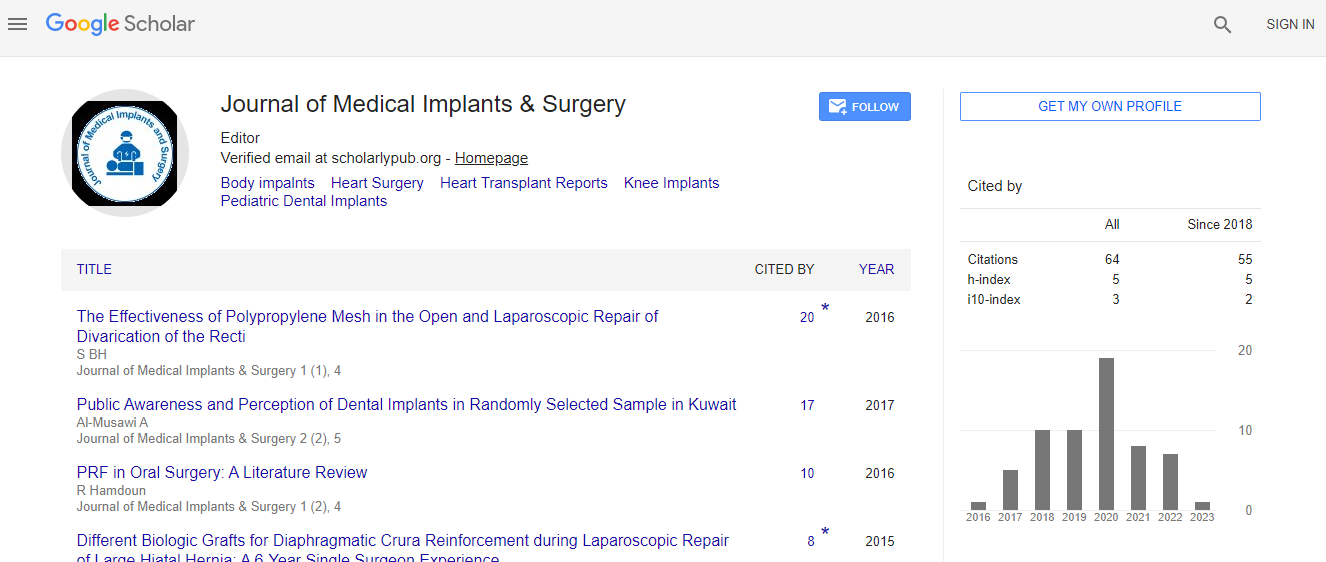Review of In-Vivo Behavior of Porous Titanium Implants for Orthopedic Applications
*Corresponding Author: Emma G Ricci-De Lucca, Department of Mechanical Engineering and Materials Science, Swarthmore College, Pennsylvania, U.S.A, Tel: 8456674501, Email: er207@duke.eduReceived Date: Nov 03, 2021 / Accepted Date: Nov 17, 2021 / Published Date: Nov 24, 2021
Citation: Lucca EGR, Kelly C, Gall K (2021) Review of In-Vivo Behavior of Porous Titanium Implants for Orthopedic Applications . J Med Imp Surg, Vol.6 Iss.6 No:e119.
Copyright: © 2021 Lucca EGR, et al. This is an open-access article distributed under the terms of the Creative Commons Attribution License, which permits unrestricted use, distribution, and reproduction in any medium, provided the original author and source are credited.
Abstract
Porous titanium and titanium alloys are used in various orthopedic implants due to the ability to provide moderate stiffness, high strength, osteoconductive scaffolds to support skeletal reconstruction and guide bone growth. The objective of this review was to analyze preclinical studies conducted on porous titanium implants using a variety of manufacturing processes. The papers revealed an increasing number of published preclinical research studies evaluating porous titanium as a biomaterial for bone implants and more specifically, an increase in the use of additive manufacturing as a fabrication technique since 2010. A wide variety of fabrication methods for porous titanium implants, and preclinical models investigating the bone ingrowth have been reported. The majority of reported porosities for porous titanium implants used in preclinical animal studies had a mean of 61%, and the majority of pore sizes had a mean of approximately 500 μm. Animal models used to evaluate performance of porous titanium implants ranged in model type, time points, and endpoint analyses used. Of the surveyed studies, approximately a third carried out biomechanical testing of the implant. The review includes a discussion of the design and manufacturing of porous titanium implants and the preclinical models used to support translation to clinical applications.

 Spanish
Spanish  Chinese
Chinese  Russian
Russian  German
German  French
French  Japanese
Japanese  Portuguese
Portuguese  Hindi
Hindi 